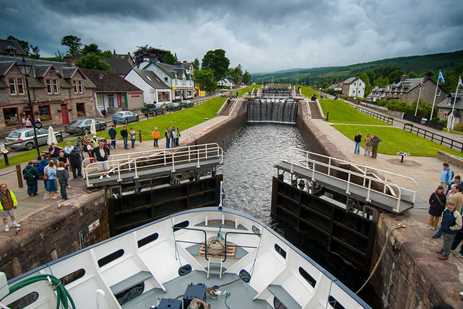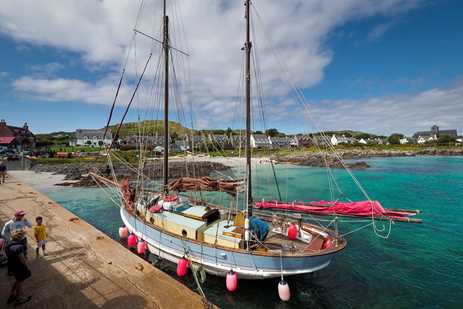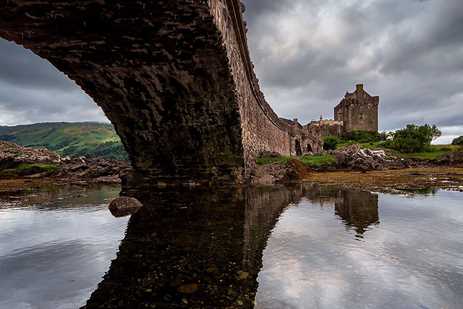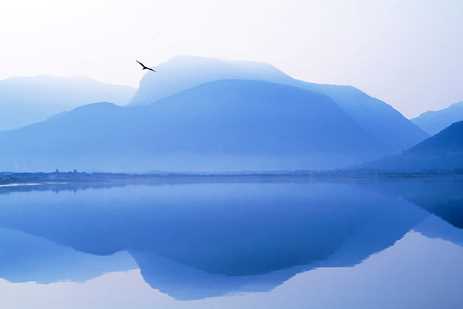May 2024
4 Min Read
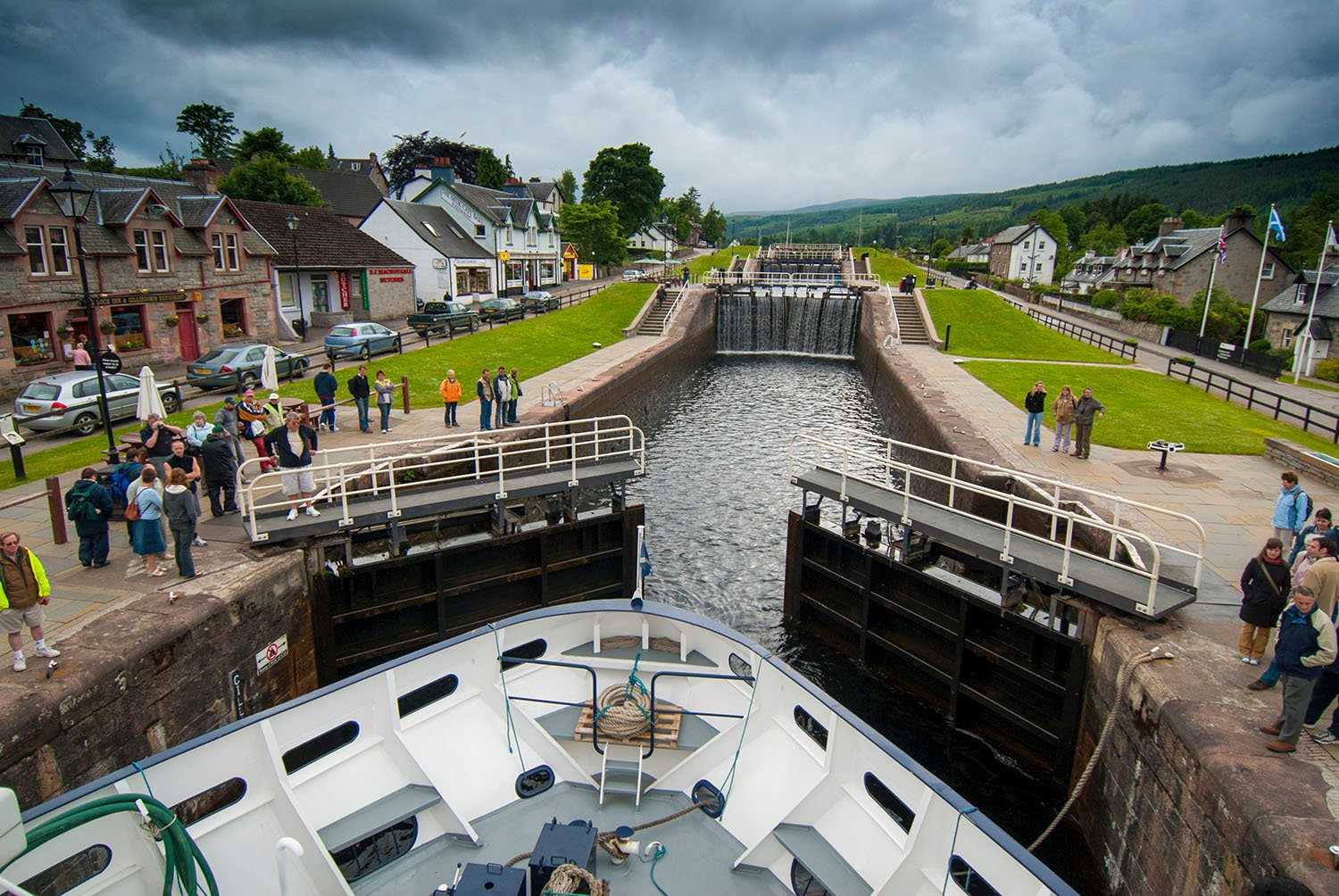
National Geographic photographer Jim Richardson is truly mad about Scotland. It’s his favorite place to photograph, to talk about, and to spread the word about, so others will go and experience its many delights. Here, he shares some of his favorite highlights from traveling aboard the intimate Lord of the Glens. And follow him on Instagram where he posts his Scotland Fix of the Day with more fascinating facts and photos. Get Inspired by Photos, Videos, Webinars, Stories, and Exclusive Offers. Sign Up
Sailing across Scotland and through the heart of the Highlands sounds (at first) like a fantasy, but take the Lord of the Glens down the Caledonian Canal and that’s exactly what you are doing. Two hundred years ago industrious Scots were digging this historic canal, building it large enough to carry a 32-gun frigate, at the time of the Napoleonic Wars. It’s considerably more peaceful now—wildflowers grow along the canal trail which you can hike, catching up with the Lord of the Glens at the next picturesque lock. The canal starts in Inverness and ends near Ft. William. In between it connects Loch Ness (monster there!), Loch Oich (might have a monster!), and Loch Lochy, past castles, through villages (with pubs) and surrounded by stunning scenery and the kind of history any Outlander fan might relish.
Two hundred years ago it took half a day to descend Neptune’s Staircase with sailors out turning capstans to open the locks. Today it usually takes about 90 minutes. The Lord of the Glens always draws a crowd as it descends this western terminus of the canal near Ft. William. Initially built in 1803 and 1822 (and designed by Thomas Telford), boats are lowered 64 feet through the eight impressive locks. Much beloved by Scots fond of their history of invention, the locks are a popular spot for children and dog walkers. Standing on the pathway is also an ideal place to recount the troubled history of the whole canal, its stupendous cost overruns, failed promise, and eventual evolution into a treasured recreational waterway.
From the deck of the Lord of the Glens, docked for the evening in Tobermory on the Isle of Mull, you have two wonderful things to relish: the Spanish galleon San Juan de Sicilia, sunk somewhere right out there in the bay (laden with New World gold, according to legend); and the fact that a really wonderful Scottish pub is just a short stroll down along the colorful storefront street. Known for the signature red, yellow, and blue buildings that the children’s television show Balamory made famous, this has to be one of the prettiest waterfronts of any Scottish island village. It’s a planned village, built in 1788 and designed by Thomas Telfod, that same engineer whose imprint is scattered all over Scotland, from big projects like the Caledonian Canal down to the plan of village churches like the one on Iona.
Coming into Iona is a spectacle of tranquil turquoise water, a quaint village—and a history laden with ancient Celtic saints, raiding Vikings, and Scottish kings buried in the abbey graveyard for centuries. The wee island has been known as a sacred site for the last 1,500 years. St. Columba came here after being expelled from Ireland and the Vikings raided repeatedly but never got their hands on the fabulous Book of Kells, believed to have been created here. Today visitors come not only for the history but the sense of peace that pervades the place. Lined by that beautiful blue water, the village is strung along the beach and off towards the medieval Iona Abbey. If days get better than this, I don’t know how.
Granite boulders forming the Street of the Dead (Sraid nam Marbh), which leads off to Iona Abbey, have lain here on Iona for more than 1,000 years. Along this processional way the bodies of Scottish kings (MacBeth included) and other royalty were carried to their graves in Reilig Odhráin from Martyr’s Bay, where Viking raiders killed 68 monks in 806 A.D. (Plunder followed, but the Book of Kells was spirited away to Ireland.) The Lords of the Isles reverenced the place by endowing the abbey, and in the 1900s the modern international Iona religious community restored the abbey and brought it back to active spiritual life. And that’s all on just one small island!
Eilean Donan Castle on Loch Duich has a layered—and juicy—history going back to the Celtic saint, Donnan of Eigg (martyred in 617 A.D.), for whom the island is named. The castle was founded in the 13th century, but the Royal Navy blew it up in 1719 during a Jacobite rebellion and left it a pile of rubble for 200 years. Between 1919 and 1932 it was finally rebuilt, and the bridge was added at that time. (Building bridges out to your defensive castle on an island in medieval times was never a good idea.) Now restored, Eilean Donan is endlessly popular with photographers, movie producers and wedding parties—for obvious reasons. (Hope for brooding skies like this to set a proper Highlands mood.)
Leaving the last lock on the Caledonian Canal and venturing out onto Loch Linnhe is always a grand sight—Scotland’s highest mountain, Ben Nevis, commands the view, while Fort William hugs the shore at its base. These are tidal waters that take the Lord of the Glens out into the islands of the Inner Hebrides. Fort William has seen its share of history, from clan feuding, through to Oliver Cromwell’s invasion and the Jacobite uprisings. The site of the last loch is Corpach, its name reflecting ancient times when the corpses of Scottish kings departed for their burial on Iona from here.
Lord of the Glens is uniquely sized to transit the Caledonian Canal. Come aboard and cut through the heart of the Highlands on our enchanting Scottish voyage.
